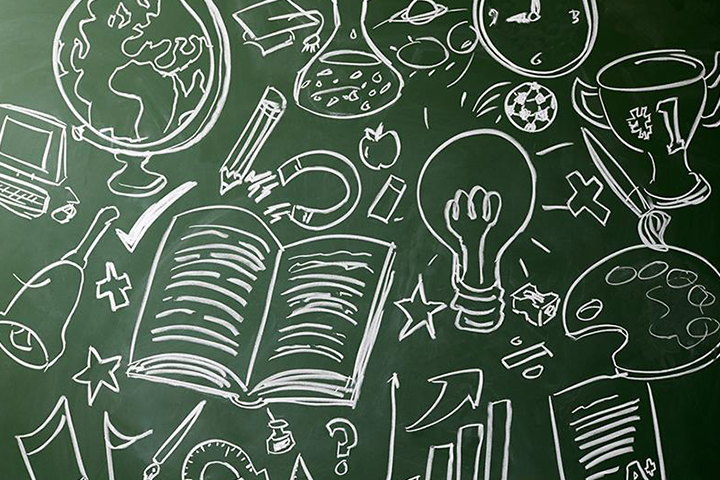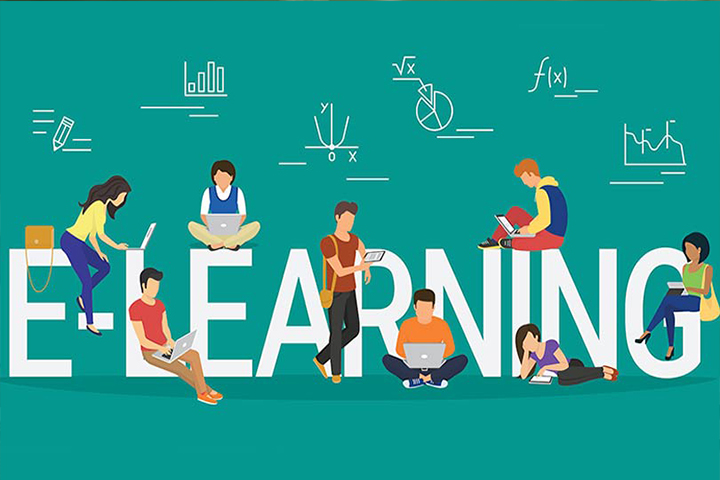 CURRICULAR FRAMEWORK FOR COGNITIVE RENAISSANCE (PART- 1)
CURRICULAR FRAMEWORK FOR COGNITIVE RENAISSANCE (PART- 1)Imagine what would have been the joy of the man who first discovered the fire. He possibly did not even imagine that a little spark over there could provide the much-needed magic that would transform the entire way of his living process. He moved into a new world of cognition. His understanding of the use and purpose of the fire facilitated innovation and creativity to leap into a new set of skills. Change was awesome, but it demanded to get out of the fear of fire.

In no way, the discovery of the wheel was less significant. He saw a little piece of wood or metal moving. His “wow” feeling provoked him to think how best he could use it to his advantage. Yes, he transported the burden on his shoulders to the shoulders of the wheel. His thinking moved into another elevated platform in its dynamics. It was a second renaissance, because it led to a cultural change – the culture of living, the culture of communicating, the culture of transporting, the culture of business and the culture of thinking.
What started as a simple calculating machine by Charles Babbage, evolved into several generations of technology bringing along with it an entirely new paradigm and style of perceptions to life and its designs. Complex problems were capsuled into simple operations, distances were broken into a webbed world, human energy could be synergized for massive operations, man-machine interface was bridged to make machines intelligent enough to carry out several human operations with better ease and perfection. Rather, the humans sought to relieve themselves from the monotony of doing same thing on a repetitive mode. Thus, human intelligence could be used for creativity and innovation. This has triggered the desire for enterprise and thirst for proving oneself beyond the normal definitions of human endeavors. Again, a cultural rejuvenation, but at a greater speed and a larger scale!

Education, as one of the basic facilitators for growth had adopted itself through every single change that happened through the entire course of these centuries. From informal, incidental and accidental learning, we moved to a world of structured learning. The basic human needs for the present and the future were well anticipated and articulated to the design of a curriculum – an exercise to run through a series of experiences formally, however including from time to time, the experiences that were assimilated during the course of this running race.
In so far as the Indian social architecture is concerned, personalized delivery systems for learning structured by a Mentor, with his personal supervision in all-encompassing Gurukul facilitated the genius in the pupils to unravel, in different fields of knowledge, skills and social intercourse. The focus of the entire system was in developing “Sthitha Pragna” – one who resides in one’s own consciousness – the celebration of "Being". The glory of the individual was celebrated at every possible time, with no comparisons between people, achievements and skills. "Learning" took the prime stage and “teaching” was just peripheral.
The dynamics from those days to the current stage has witnessed several philosophies emerging to define what "education" is and what should its purpose, goal and parameters be. The focus of celebrating "personal excellence" was replaced to an industrial model of mass delivery of knowledge that would meet requirements of "lower skills" (I am using this expression not in a contemptuous sense, but to impress that the goals of excellence were replaced by the goals of success). This led to competition for survival and existence rather than ushering growth and value. The philosophies – Behaviorism, Cognitivism, Constructivism and Connectivism -reflected the concurrent social thinking and its emergent needs.
A close examination of this change dynamics presents several facets of human cognition and its periodic renaissance. The term "Renaissance" is used consciously, because every time these changes occurred, they brought a cultural change in thought architecture, behavioral patterns, life styles, relationship models and professional practices. And now, one can possibly feel that we are stepping into the next generation of cognitive renaissance – with huge opportunities for the next generation of thinking. It could be positive, progressive and good for humans in this planet; or could be destructive, degenerative and suicidal to a glorious future = it is anybody’s guess. But humans have always exercised their wisdom and certainly would not fail another time.

Learning, instead of being a natural process like breathing, has now been packaged into several designs and capsules, more like a consumable product and has become the nucleus of an intellectual business model. It appears like supplying packaged Oxygen cylinders for facilitating breathing in a polluted environment. The focus presently appears to create "brands" of learning among the learners so that its revenue models bring the profits through competitive costing. Advertisements and Marketing strategies claiming "to cause learning" have provided a deceptive and unimpressive scene.
In the recent past, in most countries, the focus of global priorities has been negated, promoting a 'self-interest' model for nations. While the argument "Think globally; Act locally" is indeed a pragmatic proposition, it is equally important to move towards global and planetary interests from 'selfish' interests. Nevertheless, the enhanced mobility of people across the globe and opportunities for professional engagements worldwide demands a broader understanding of the purpose and objectives of education, and thus the parameters that define the curriculum. There are neither options nor alternatives.
Further, the technological advances have brought the global practices much closer not only in terms of skills and practices, but in terms more synchronized perceptions that force synergy in thoughts and actions. Therefore, educators worldwide have to understand and facilitate the interplay of human cognition, irrespective of geography, race, culture and contexts, enabling the possibility of a newer progressive human evolution, that ensures safety and sustenance of all – with powers to fight together the odds of natural and man-made challenges. All these call for a differentiated thinking and the need for stepping into a higher pedestal of human cognition.
Image courtesy:http://www.sec-ed.co.uk/article-images/182892/Subjects-AS_popup.jpg
Image courtesy:http://franchiseindia.s3.ap-south-1.amazonaws.com/uploads/content/edu/art/5b3c95847bf32.jpg
Image courtesy:http://assets.vccircle.com/uploads/2018/10/OnlineeducationThinkstockPhotos.jpg